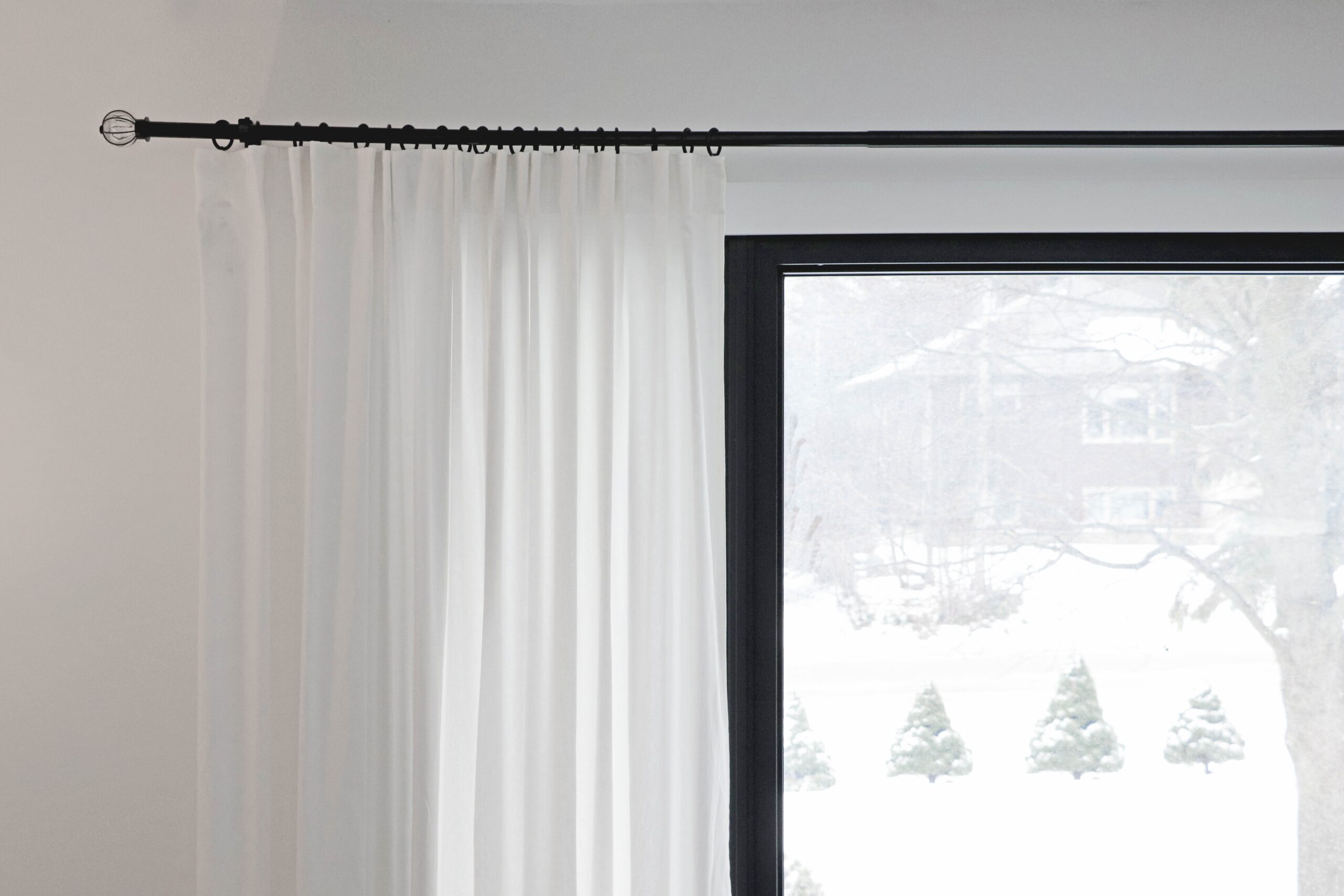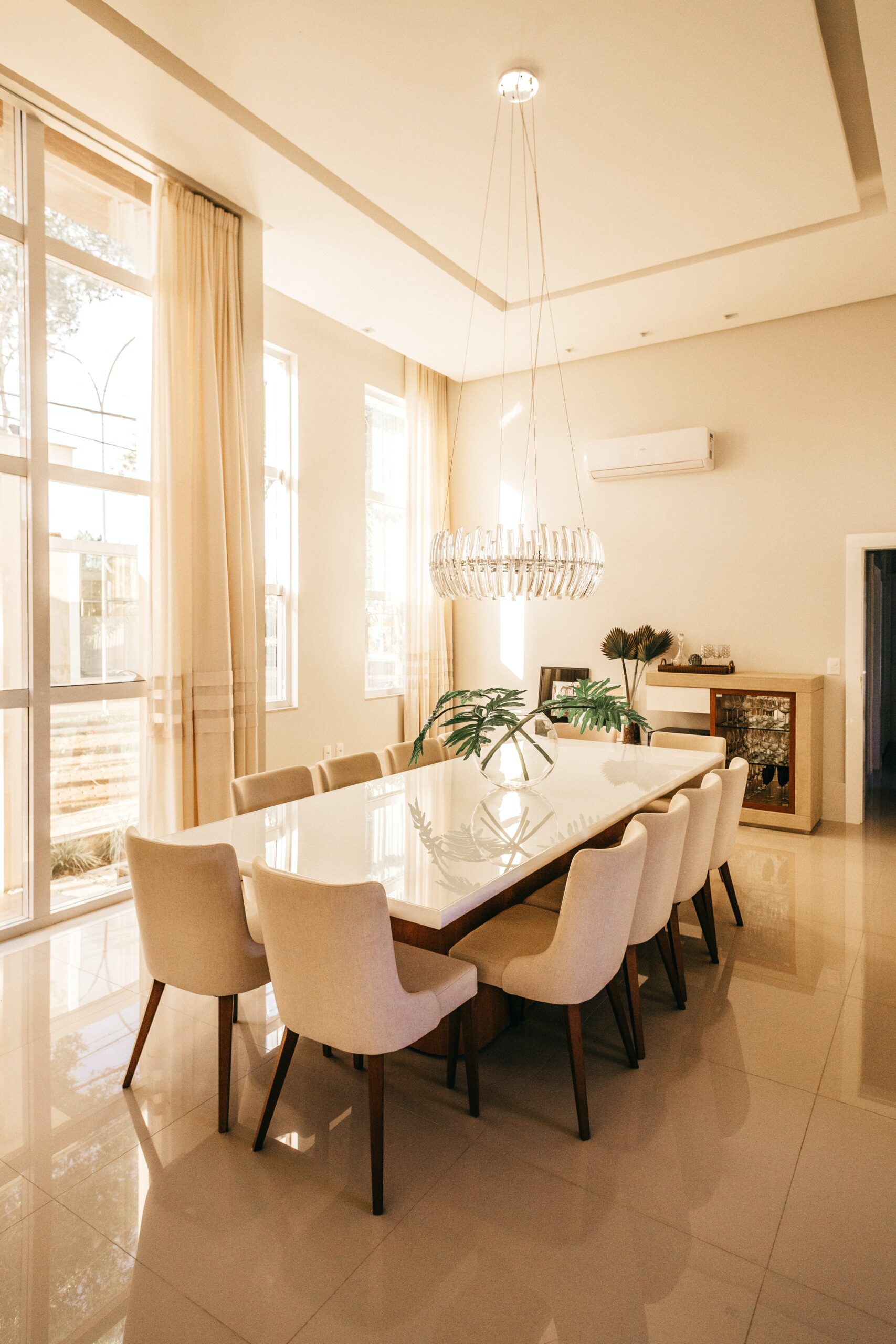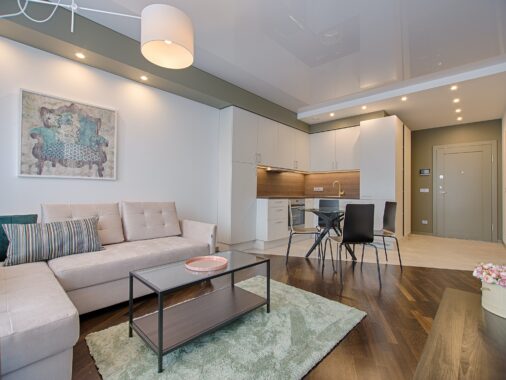Curtain rods are long, narrow poles or rods that are designed to hold up curtains and other window treatments. They can be made from a variety of materials, including metal, wood, and plastic, and come in a range of styles and designs to suit different window sizes and decor styles.
Curtain rods typically have brackets on each end that are attached to the wall or window frame, and the curtains are hung from the rod using curtain hooks, rings, or grommets. Some curtain rods may have a finial or decorative end cap on each end to provide additional style and detail.
Curtain rods are an important part of any window treatment, as they help to hold the curtains in place and provide a sturdy structure for them to hang from. They also allow the curtains to be easily opened and closed, providing privacy, light control, and decorative flair to a room. Some of them mentioned below :
Umbra Cappa Curtain Rod: A sleek and modern rod that comes in a variety of finishes and adjustable lengths.
Kenney Chelsea Standard Decorative Window Curtain Rod: A classic and elegant rod with decorative finials that can fit a variety of window sizes.
AmazonBasics 1″ Curtain Rod: A budget-friendly option that is easy to install and comes in a variety of finishes.
Rod Desyne Bonnet Adjustable Curtain Rod: A versatile and sturdy rod with decorative finials that can hold heavier curtains.
Bali Blinds Oval Spring Tension Rod: A convenient and easy-to-use option for small windows or temporary use that requires no hardware or drilling.
Ultimately, the best curtain rod for your decor will depend on your personal style, budget, and the size and shape of your windows.
Different Types of Curtain Rods Available
There are several types of curtain rods available, including:
Standard Curtain Rods: These are the most common type of curtain rods that have a straight design and are available in various materials such as wood, metal, and plastic.
Tension Curtain Rods: These rods use spring tension to hold them in place between two walls and do not require drilling holes for installation.
Double Curtain Rods: These are two rods installed together, allowing you to hang both a sheer curtain and a heavier curtain on the same window.
Bay Window Curtain Rods: These rods are designed to fit the angle of bay windows and can be straight or curved depending on the window’s shape.
Magnetic Curtain Rods: These rods use magnets to attach to metal window frames, making them easy to install and remove.
Traverse Curtain Rods: These rods have a cord system that allows you to open and close curtains with ease, making them ideal for heavy or hard-to-reach curtains.
Ultimately, the type of curtain rod you choose will depend on your specific needs and the type of window you have.
Curtain Rod Hardware Installation Tips
Here are some curtain rod hardware installation tips:
Measure your window: Measure the width of your window and determine how high you want your curtains to hang. This will help you determine the length of your rod.
Choose the right hardware: Select the appropriate hardware for your curtain rod, such as brackets, screws, and anchors. Ensure that the hardware can support the weight of your curtains.
Mark the bracket placement: Mark the placement of your brackets with a pencil, making sure they are level and equidistant from the ends of the window. Use a level to ensure accuracy.
Drill pilot holes: Pre-drill pilot holes where you marked your bracket placement to make the installation process easier and prevent the wood from splitting.
Install the brackets: Attach the brackets to the wall with screws and anchors, making sure they are securely fastened.
Attach the rod: Once the brackets are in place, slide the curtain rod through the curtain panel and place it onto the brackets.
Secure the finials: If your rod has finials, attach them to the ends of the rod and tighten them in place.
Hang your curtains: Finally, hang your curtains on the rod and adjust them to the desired height and position.
Remember to always follow the manufacturer’s instructions for your specific curtain rod and hardware.
Curtain Rods and How They Help With Bay Window Design
Curtain rods can be an important element in bay window design as they help to frame and enhance the window’s unique shape. Bay windows typically have three or more panels that create a curved or angled shape, which can be challenging to decorate with traditional straight curtain rods.
Bay window curtain rods are designed to fit the angles of the bay window and can be straight or curved depending on the window’s shape. They allow you to hang curtains that follow the contours of the bay window, which can help to soften the overall look and create a more cohesive design.
Using a bay window curtain rod can also make your window appear larger, as it allows you to hang curtains beyond the edge of the window frame. This can make the room feel more spacious and add a sense of drama to the space.
When choosing a curtain rod for your bay window, consider the weight of your curtains and the style of your decor. There are a variety of options available, including double curtain rods, which allow you to hang both a sheer curtain and a heavier curtain, and adjustable bay window curtain rods, which can be customized to fit your specific window shape.
Overall, using a curtain rod in your bay window design can help to enhance the window’s unique shape and create a cohesive and stylish look in your space.
Curtain Rod Guide and What Curtain Hooks Are The Best Choice
Here is a quick curtain rod guide and some of the best curtain hooks choices:
Curtain Rod Guide:
Choose the appropriate length and diameter of the rod to fit your window and curtains.
Select a style and finish that complements your decor.
Consider the weight of your curtains and choose a rod that can support their weight.
Decide whether you want to use single or double rods for your curtains.
Determine the type of installation you prefer, such as wall-mounted, ceiling-mounted, or tension rods.
Best Curtain Hooks Choices:
S-shaped hooks: These are easy to use and can be used with a variety of curtain styles. They attach to the curtain rod and allow the curtains to move smoothly along the rod.
Clip rings: These are another popular choice and are great for lightweight or sheer curtains. They attach to the top of the curtain panel and clip onto the rod for easy installation.
Pin-on hooks: These hooks attach to the top of the curtain panel and are secured to the rod with a pin. They are a good choice for heavier curtains as they provide extra support.
Sew-on hooks: These hooks are sewn directly onto the curtain panel and provide a more permanent solution. They are a good choice for heavy or custom curtains.
When choosing curtain hooks, consider the weight and style of your curtains, as well as the type of rod you are using. Make sure the hooks you choose are compatible with your curtains and that they can support the weight of your curtains without sagging or pulling on the rod.
FAQ section
The advantages of using an indoor curtain rod include:
Enhancing the Decor: Curtain rods are available in various styles, finishes, and materials to complement any decor, making them a great way to add a finishing touch to any room.
Functionality: Curtain rods provide a functional way to hang curtains, which can provide privacy, block out light, and help regulate temperature in a room.
Versatility: Curtain rods are versatile and can be used for a range of curtain styles, including rod pocket, grommet, and tab top curtains.
Easy to Install: Most curtain rods are easy to install and come with all the necessary hardware, making them a simple and hassle-free addition to any window.
Durability: High-quality curtain rods are durable and can withstand the weight of heavy curtains, providing long-lasting support and functionality.
Cost-effective: Curtain rods are a cost-effective way to add style and functionality to a room, compared to other window treatments such as blinds or shutters.
Overall, using an indoor curtain rod can be a great way to add style, functionality, and versatility to any window treatment, while also being an easy and cost-effective option for enhancing the decor of a room.
Indoor curtain rods and outdoor curtain rods are designed for different purposes, and someone may choose to use an indoor curtain rod over an outdoor one for several reasons, including:
Style: Indoor curtain rods are typically more decorative and stylish than outdoor ones, and may be designed to complement the interior decor of a room, while outdoor ones are generally more functional and less decorative.
Durability: Outdoor curtain rods are designed to withstand the elements and are made from weather-resistant materials, such as rust-resistant metal or synthetic materials, while indoor curtain rods may not be able to handle exposure to the elements and may not be as durable over time.
Curtain Type: Indoor curtains are typically made from lighter fabrics and may not require the same level of sturdiness as outdoor curtains, which are often made from heavier fabrics that require a more robust curtain rod.
Installation: Indoor curtain rods are typically easier to install than outdoor ones, which may require additional hardware and more complex installation due to their location.
Overall, someone may choose to use an indoor curtain rod over an outdoor one because it provides a more stylish and decorative option for interior decor, is easier to install, and is better suited to hold lighter fabrics used in indoor window treatments.
Outdoor curtain rods, on the other hand, are better suited for heavier outdoor fabrics and the elements, and are typically designed for more functional purposes.
While indoor curtain rods offer many advantages, there are also some potential disadvantages to consider, including:
Limited Weather Resistance: Indoor curtain rods are typically not designed to withstand exposure to moisture, extreme temperatures, or harsh weather conditions, which can lead to rust, corrosion, or other damage if used in outdoor environments.
Size Limitations: Indoor curtain rods may not be able to support heavier or wider curtains, which can limit the range of available window treatment options.
Mounting Limitations: Indoor curtain rods typically require mounting to a solid surface, such as a wall, which may not be feasible in some spaces or may require additional installation hardware.
Compatibility: Not all curtains or window treatments are compatible with all types of indoor curtain rods, which may require additional hardware or accessories to ensure proper installation and function.
Maintenance: Indoor curtain rods may require regular maintenance to keep them clean and functional, which can add to the overall cost and effort required to use them.
Overall, the disadvantages of using an indoor curtain rod may be limited, but it’s important to consider these potential issues when selecting the best option for your needs and space.
When it comes to selecting the best type of fabric for curtains with a rod or track system, it depends on your personal preferences, the style of the room, and the type of curtain rod or track you are using. However, here are some popular fabric options that work well with rod or track systems:
Cotton: Cotton is a popular choice for curtains and works well with most rod or track systems. It is lightweight, easy to clean, and comes in a wide range of colors and patterns.
Linen: Linen is another popular fabric choice for curtains with rod or track systems. It has a crisp, clean look and is lightweight, making it ideal for rooms where you want a lot of natural light.
Polyester: Polyester is a durable, affordable, and easy-to-maintain fabric that works well with most rod or track systems. It comes in a variety of colors and patterns, and it is available in different weights, making it suitable for different styles of curtains.
Velvet: Velvet is a luxurious and heavyweight fabric that works well with heavier, decorative rod or track systems. It adds texture and warmth to a room, and is ideal for blocking out light and providing privacy.
Sheer: Sheer fabrics, such as chiffon or voile, work well with lightweight, decorative rod or track systems, as they allow natural light to filter through while providing some level of privacy.
In general, it’s best to choose a fabric that complements the overall style of the room and provides the level of light filtering, privacy, and functionality that you need.
Final Thought About Curtain Rod Installation
Curtain rods may seem like a small detail in home decor, but they play an important role in the overall look and functionality of your window treatments. When selecting a curtain rod, consider the style of your room, the weight and type of your curtains, and the type of rod that will work best with your space.
Whether you opt for a simple and understated design or a more decorative and ornate style, a well-chosen curtain rod can enhance the look of your windows and tie together the overall design of your room. With a little research and consideration, you can find the perfect curtain rod to suit your style and functional needs.





